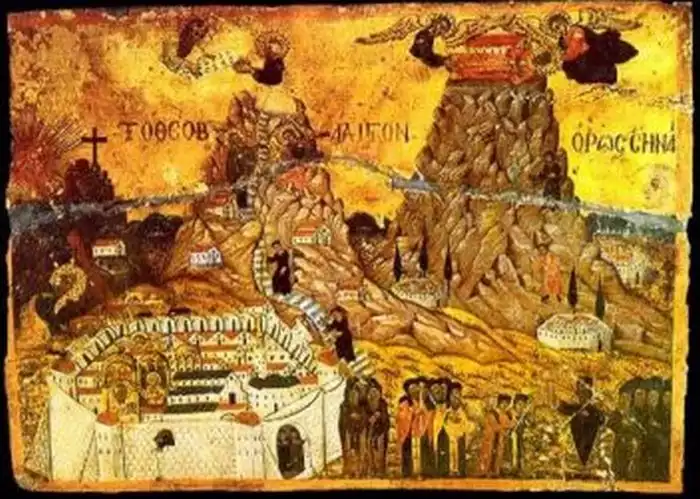
A Journey Through the Ascetic Teachings and Influence of a Byzantine Sage
Saint Hesychius of Sinai, a figure shrouded in the mists of time, emerges as a pivotal character in the rich tapestry of Byzantine religious literature. His life, a blend of mystery and spiritual profundity, unfolds within the sacred walls of Saint Catherine’s Monastery on Mount Sinai. As an ascetic author and hieromonk, Hesychius’ contributions, though fragmentary, offer a window into the soul of Byzantine monasticism and its enduring legacy.
Hesychius’ life and times remain an enigma, with little concrete information about his exact timeline or personal journey. What endures is his designation as “Our Holy Father,” a title that distinguishes him from contemporaries, notably the famed Hesychius of Jerusalem. His writings, primarily ascetic maxims, reverberate with the quest for spiritual temperance and virtue, underscoring a profound understanding of the monastic calling.
His work, often interwoven with Biblical references, particularly follows the “Codex Sinaiticus” version, revealing his deep engagement with scriptural texts. The collection of 200 ascetic maxims, attributed to him, highlights a playful acknowledgment of his name (Hesychius) and monastic affiliation with the Basilian Order. These writings, while scant, have been preserved in various manuscripts across Europe, suggesting a wider influence than previously recognized.
The pivotal role of Hesychius in Byzantine spiritual literature becomes evident through the examination of his maxims. These teachings, often misattributed or lost in the labyrinth of history, reflect a profound understanding of the inner journey towards spiritual wholeness. His insights into the nature of prayer, contemplation, and ascetic living continue to resonate, offering guidance to those on the spiritual path.
Saint Hesychius of Sinai stands as a testament to the enduring power of spiritual wisdom, transcending the barriers of time and space. His teachings, though fragmented, form a mosaic of insight, shedding light on the path of inner transformation. As we unravel the threads of his legacy, we discover a voice that still speaks to the heart of the spiritual seeker, inviting us on a journey of contemplation, virtue, and inner peace.
Feast Day: March 29 (Greek Orthodox Church), October 3 (Roman Catholic Church)
Patron Saint: Monks and Contemplatives
References
“Byzantine Monastic Foundation Documents”, Dumbarton Oaks, 2000.
Eastern Orthodox Christianity: A Western Perspective”, Baker Academic, 2006.
“Mount Sinai: A History of Travellers and Pilgrims”, Hambledon Continuum, 2016.
“The Spiritual Meadow” by John Moschos, Cistercian Publications, 1992.
